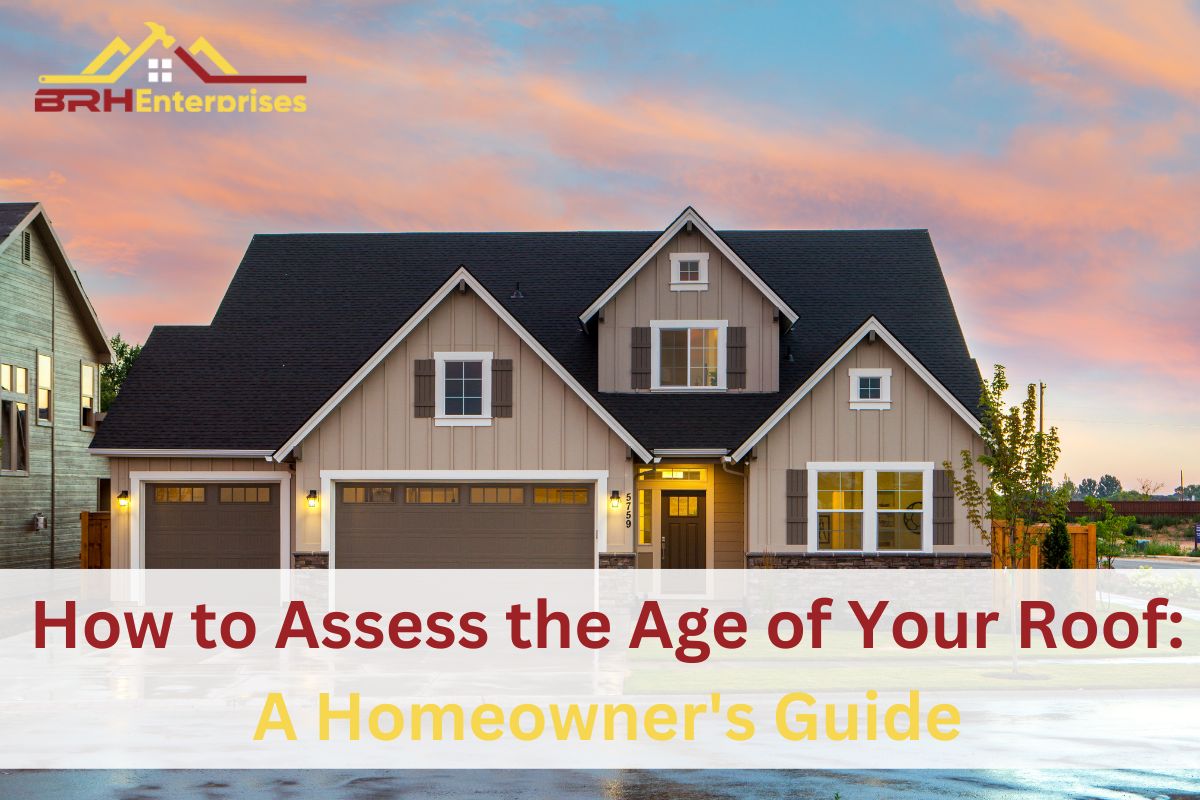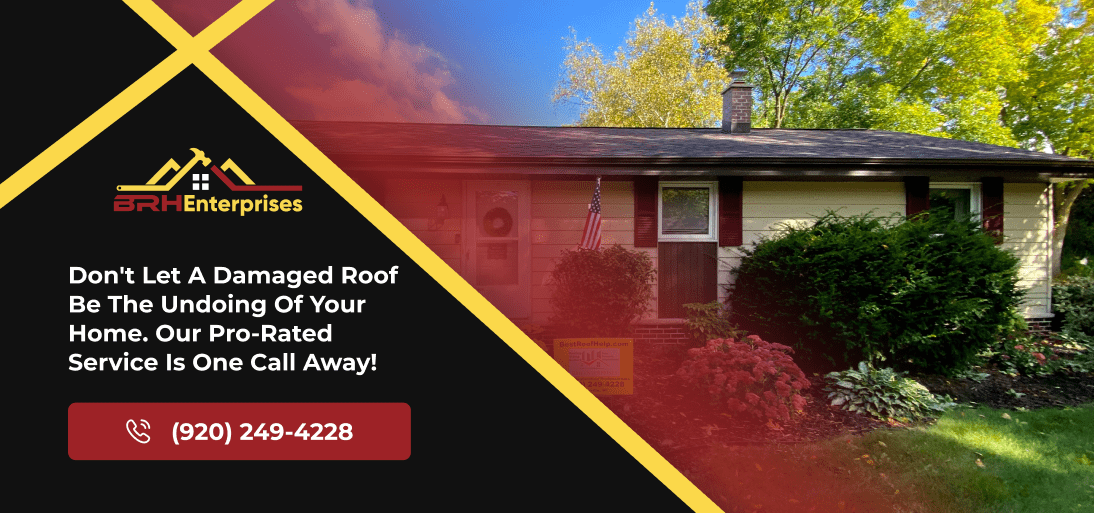How to Assess the Age of Your Roof: A Homeowner’s Guide
Estimated Reading Time : 6 Min.

Understanding how old your roof is goes beyond curiosity, it’s a proactive step in attempting to preserve your home’s structural integrity. Your roof, while often overlooked, is essential as your home’s first defense against the elements. Whether it’s UV rays, rain, heavy snow, or high winds your roof will experience wear and tear from the elements, making awareness of your roof’s age crucial for homeowners.
Most roofs last around 15 to 30 years, but understanding the specific age of your roof protects you from unforeseen and expensive surprises by helping you identify possible problems and schedule any necessary repairs or replacements. In this blog post, we’ll explain the importance of knowing your roof’s age, the critical role it plays in protecting your investment, and the warning signs that your roof may be aging.
How Do I Find Out The Age Of My Roof?
Are you curious about the age of your roof? Learn about the different ways to assess roof age as a homeowner:
#1. Contact the Home’s Previous Owners:
When determining the age of your roof, reach out to the home’s previous owners and ask if they can provide any information. Your real estate agent may also be able to assist you with contacting them or, if possible, you can directly reach out. Previous owners often have insight into the history of the property, including when the roof was installed.
#2. Contact the Roofers Who Installed It:
Another effective way to establish the age of your roof is by contacting the roofing company that performed the installation. Roofing professionals typically maintain records of their projects, including installation dates. By reaching out to the roofers directly, you can obtain accurate, firsthand information about when your roof was installed.
#3. Track Down Building Permits:
Building permits are crucial documents that contain essential information about your property, including the installation date of the roof. You can obtain a copy of the building permit by reaching out to your local government. By examining the permit, you can get precise details about when the roof was originally installed, aiding in your understanding of its age.
#4. Schedule a Professional Roof Inspection:

To get a thorough assessment of your roof’s age, consider scheduling a professional roof inspection. A qualified roofer can visually inspect the roof, identifying signs of wear and tear. During the inspection, they may check for shingle damage, granule loss, and other indicators that can help estimate the age of the roof. This simple yet hands-on approach provides valuable insight into the current condition of your roof.
These methods collectively offer a well-rounded approach to determining your roof’s age, allowing you to make informed decisions regarding maintenance and potential replacement. By combining information from previous owners, roofers, building permits, and professional inspections, you can get a better understanding of the history and condition of your roof.
Also Read: How Long Does A Roof Last In Wisconsin?
How To Tell The Age Of A Roof With ERUL
One of the ways in which your roof’s age can be assessed is through the Estimated Remaining Useful Life (ERUL) of the shingles. This is a great way to not only assess how old your roof and shingles are, but to be able to determine how much time remains before they need replacement.
There are three parts to determining the ERUL of shingles:
1. Pliability and Physical Integrity:
Start by examining the shingles for pliability. Are there any cracks or chips? If the shingles are brittle and show signs of damage, especially in high-wind areas, they can no longer be considered reliable.
2. Bonding Between Shingles:
Assess the bonding between shingles. Strong bonding is vital, particularly in regions prone to high winds. Shingles not tightly bonded to those below them may be stripped away during severe weather, especially if they have become brittle.
3. Granule Loss Patterns:
Investigate granule loss but consider it in the context of the shingle’s life cycle. Granules can be lost during the initial months after installation and later when the material becomes brittle. Observe the granule loss patterns on the shingles, whether at the edges, in streaks, or in specific spots.
Now, integrate the ERUL component:
ERUL Assessment:
Factor in the Estimated Remaining Useful Life (ERUL) of the shingles. This involves considering the design of the shingle, its quality, and the region’s weather. Thicker shingles generally have a longer lifespan, but experience is vital for distinguishing between different types of shingles. Assess the shingle’s quality by rubbing the surface to check granule adhesion and other indicators.
In regions with specific challenges like environmental factors that can impact shingle longevity, it becomes crucial to determine the expected lifespan of lower-quality shingles. For instance, a Wisconsin homeowner’s favorite, 3-tab asphalt shingles, can last around 15 to 20 years, architectural asphalt shingles can last 20 to 25 years, and metal roofs for 20 to 50 years, depending on the thickness and quality of the metal.
What Are The Signs Of An Aging Roof?
Being able to detect the early signs of roof aging is essential for preventative maintenance. Each one of these indicators offers information about the age of your roof and when repairs are necessary:
#1. Curling or Cracked Shingles
As shingles get older, they might bend, buckle, or break, letting water in and causing leaks. This can happen because of time passing, weather exposure, or improper installation. If your shingles start to look curled or cracked, it’s a sign they need attention, as water will be able to seep behind them and the interior of your home.
#2. Missing Shingles

When shingles go missing, it exposes your roof to water damage and leaks. This can happen due to harsh weather, the natural aging process, or if they were not installed correctly. Missing shingles create open spots on the roof, which can allow water to get in, potentially causing damage to the structure underneath.
#3. Stains on the Ceiling
Spots on your ceiling from water stains clearly indicate a roof leak. This can occur because shingles are damaged, the roof deck has aged, or metal flashing is compromised. Stains might suggest a continuous or occasional leak, and if not fixed, they can lead to more problems with both the roof and the inside of your home.
#4.Sagging Roof Deck
If your roof looks like it’s sagging, it’s a big problem that indicates structural damage. This might happen because of long-term water issues, the roof getting old, or there not being enough structural support. A sagging roof needs prompt attention because it can cause serious problems, including collapse, and harm to the overall structure.
#5. Increased Energy Bills
An old roof can make your home less energy-efficient, making your heating and cooling bills go up. This happens because of poor insulation, air leaks, or not enough ventilation, all linked to an old or damaged roof. Fixing or replacing the roof can help lower your utility costs by making your home more energy-efficient.
#6. Rusted Flashing
Rust on the metal parts of your roof, otherwise known as flashing, is a clear sign that your roof might be in trouble. Flashing protects important areas where the roof meets a vertical surface. Over time, it can wear out and rust, leading to leaks and possible water damage. If you see rust on your flashing, it’s a signal that your roof needs maintenance or repair.
How Do You Determine The Age Of The Roof For Insurance Purposes?
Determining the age of your roof for insurance purposes in Wisconsin is not much different from the way we explained earlier in the article. First, consider reaching out to the previous owners as they may have information on when the roof was installed or underwent repairs. Alternatively, you can check your home’s building permit records for the installation date. If you’ve replaced the roof, obtaining the receipt from the replacement company provides the necessary date.
Even if you can find old records that provide an age for your roof, you’ll still want to hire a professional. Their help is crucial for the insurance claim process as they’ll be able to provide an accurate estimate as well as a comprehensive report on the roof’s condition.
Understanding your roof’s age is crucial for planning maintenance, repairs, and potential replacements. This knowledge helps in carrying out the best decisions about your roof’s condition and insurance coverage, allowing you to anticipate issues and plan accordingly.
Time for a Roof Replacement? Act Now with BRH Enterprises!
If you notice missing shingles or granules, or if your roof has exceeded a lifespan of 15 years, it may be time for a replacement. At BRH Enterprises, we make the process stress-free. Take the first step with a free consultation where we discuss your concerns and replacement options. Our comprehensive residential roof replacement services ensure a quick turnaround and minimal inconvenience for you and your family. Let us help you preserve your home for years to come by contacting us today at (920) 249-4228!


